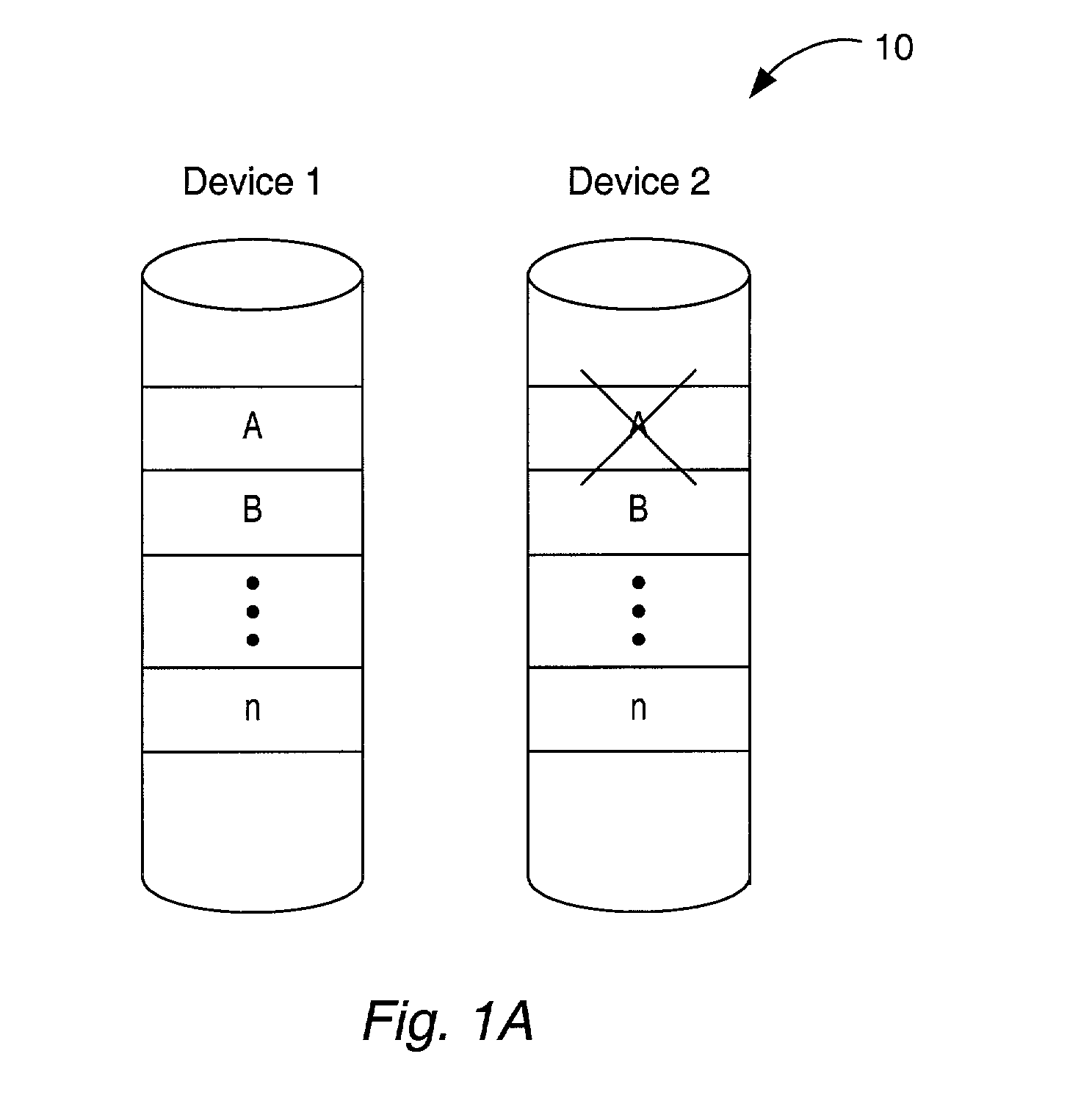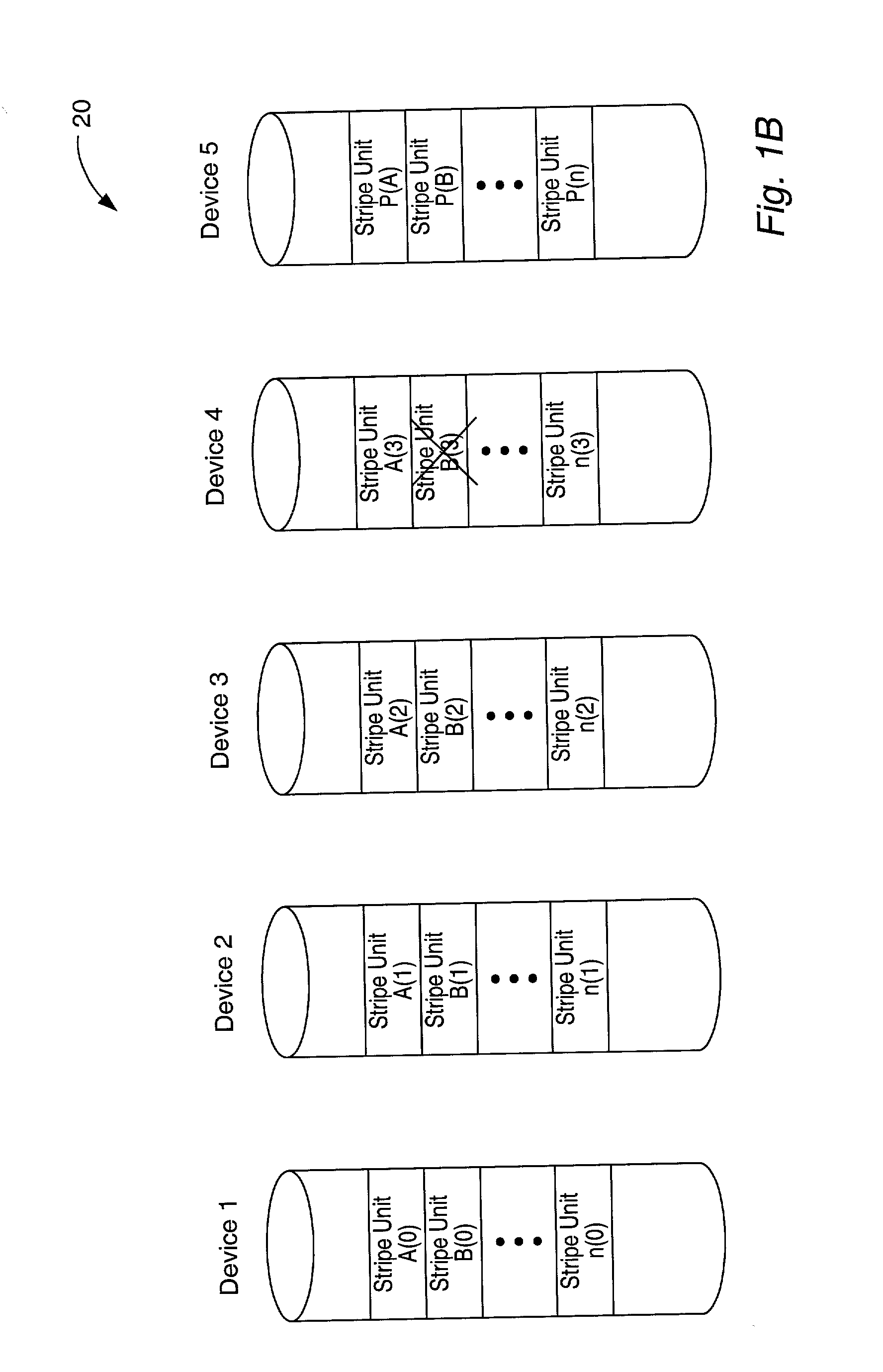Storage array employing scrubbing operations at the disk-controller level
a technology of disk controller and storage array, applied in the direction of digital signal error detection/correction, coding, instruments, etc., can solve the problems of multiple disk arrays, increased failure rates, and inability to provide data redundancy
- Summary
- Abstract
- Description
- Claims
- Application Information
AI Technical Summary
Problems solved by technology
Method used
Image
Examples
Embodiment Construction
[0037] FIG. 2A shows an example of a computer system 100 in which embodiments of the invention may be employed. A storage system 150 may be coupled to a computer system 100 by an I / O bus 110. The computer system 100 may include one or more processors 101 and various I / O devices such as a monitor, keyboard, mouse, etc. (not shown). The illustrated computer system includes a processor 101 coupled to a bus bridge unit 105. The bus bridge unit 105 is coupled to a system memory 110 and to a storage system 150. The processor 100 may use the system memory 110 to temporarily store data and software instructions that are accessed rapidly during system operation. The bus bridge 105 may contain hardware to control the system memory 110 and / or the data storage subsystem 150. The I / O bus 110 may connect the bus bridge 105 to the storage system 150 and may be a bus such as the peripheral component interconnect (PCI) bus in some embodiments. In other embodiments, the I / O bus 110 may be implemented...
PUM
| Property | Measurement | Unit |
|---|---|---|
| interface | aaaaa | aaaaa |
| mean time between failure | aaaaa | aaaaa |
| time | aaaaa | aaaaa |
Abstract
Description
Claims
Application Information
 Login to View More
Login to View More - R&D
- Intellectual Property
- Life Sciences
- Materials
- Tech Scout
- Unparalleled Data Quality
- Higher Quality Content
- 60% Fewer Hallucinations
Browse by: Latest US Patents, China's latest patents, Technical Efficacy Thesaurus, Application Domain, Technology Topic, Popular Technical Reports.
© 2025 PatSnap. All rights reserved.Legal|Privacy policy|Modern Slavery Act Transparency Statement|Sitemap|About US| Contact US: help@patsnap.com



